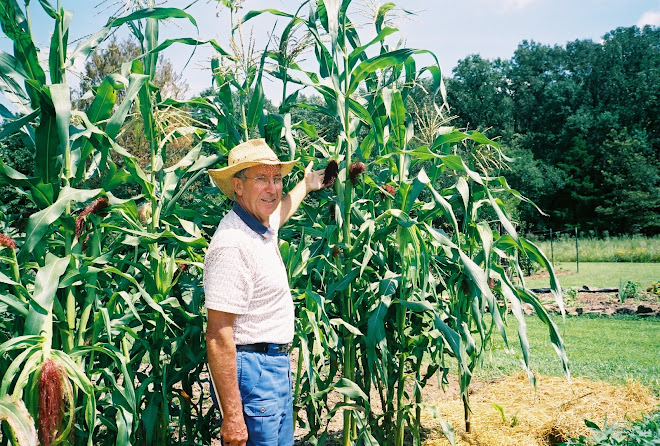Economic crisis or not, we generally like to get things "free." Sometimes there are strings attached and what appears to be free is not such a great deal. Among the thousands of natural phenomena, there are some amazing processes that give us "free" products. The process of photosynthesis is an example. It includes the use of free carbon dioxide, free sun energy, and free rain, all working in connection with a lot of natural minerals. The result is system that makes our food. It can work just fine without any input from us. I guess it is our nature, but we have a tendency to want to control the processes and take credit for things that come naturally.
We know that plants need nitrogen for growing. The nitrogen used by plants does not all come from the soil. The air is 75 percent nitrogen and plants utilize some of it on routine basis. It actually moves into the plant through the stomata, just as does the carbon dioxide. Beyond using the atmospheric nitrogen for growth, some plants are able to take that nitrogen and "fix" it in the soil. The biggest group of nitrogen fixing plants comes from the legume family, which includes peas, beans, peanuts, vetch, black locust trees, and many more.
The nitrogen fixation process is actually a little more complex in that it requires the help of Rhizobium bacteria, which are found naturally in the soil. Caution! Soils that that have had a lot of abuse through the use of high salt fertilizers and pesticides may not contain the necessary bacteria. Without the bacteria, no nitrogen will be fixed. Fortunately, you can purchase the bacteria to re-inoculate bacteria-deficient soils.
I use Austrian winter peas as one of my primary winter cover crops. I plant the peas in September and they grow about 12 inches tall in the fall and then begin to grow again in the spring. By early May they are 2 feet tall and beginning to flower. When they begin to bloom, I cut them off and either leave them right in place for garden mulch, or use them for compost, or sometimes feed them to my red wiggler worms. Corn is heavy user of nitrogen and does very well where the peas have grown.
I dig up some pea plants each fall and spring to see if they are producing nitrogen. The presence of nitrogen is easily detected by the whitish-pink nodules on the roots. The amount of nitrogen that is being "fixed" in my garden appears to be growing each year. The peas are profusely loaded with nodules this spring. I expect there is 100 - 200 pounds of nitrogen per acre on the roots. The picture below with the Austrian winter peas and the nodules show just how the nitrogen fixing system works.
In addition to the accumulation of nitrogen on the roots, the biomass of the vegetation is huge. I weighed a sample of the Austrian winter peas from my garden and estimate that I have 13 tons of organic matter (green weight) per acre. Our farming ancestors knew the value of nitrogen fixing cover crops, crop rotations, green manures, and other similar systems. The same is true of many current alternative and organic gardeners/farmers, the Amish, and others. These are the practices that lead to more sustainable farming.
The real plus in the cover crop-rotational system is that the nitrogen produced in this way is in an organic form and is released slowly, often just the way the plant needs it. It's another example of how important it is to understanding the workings of Nature. This "free" nitrogen story is about as good as it gets in Nature.

